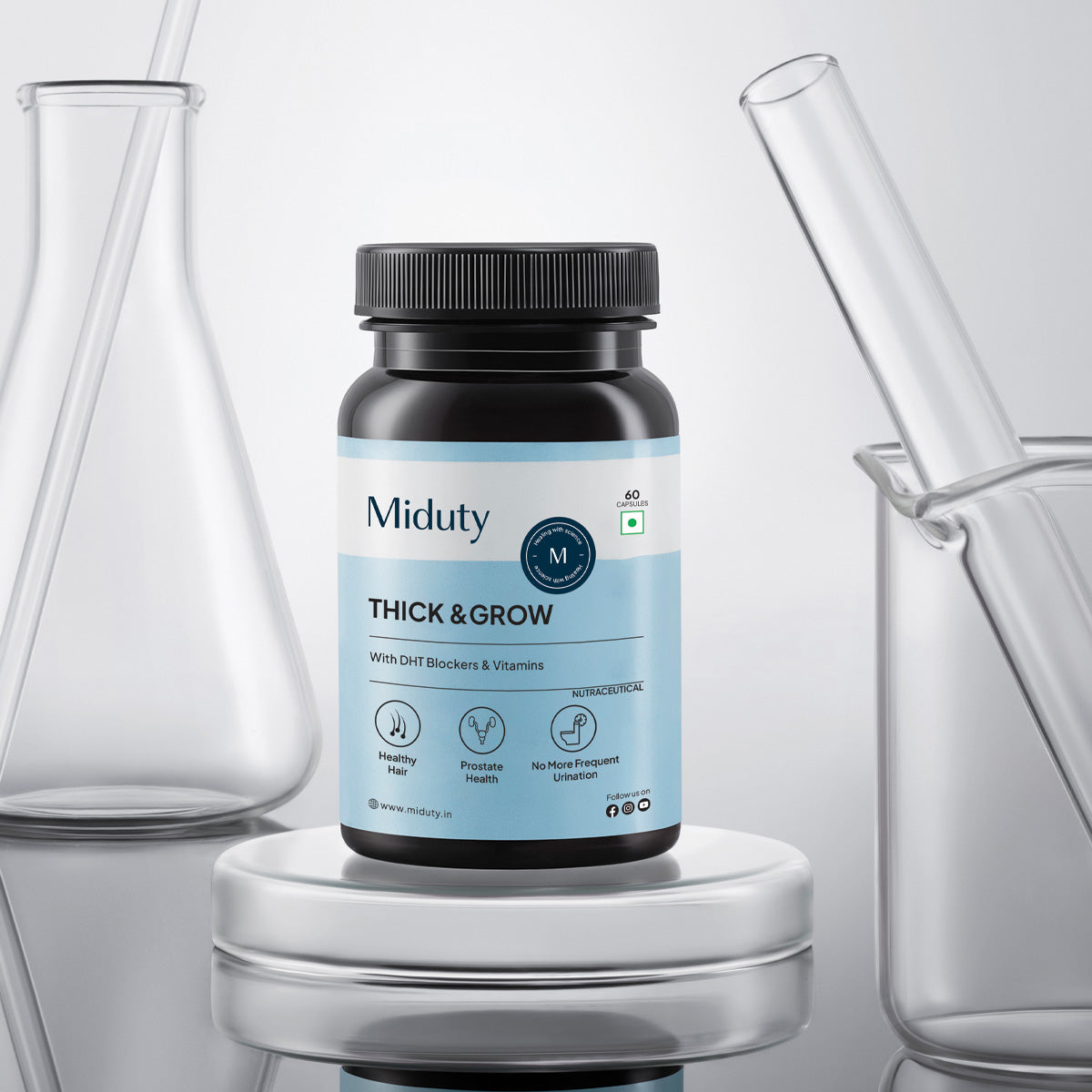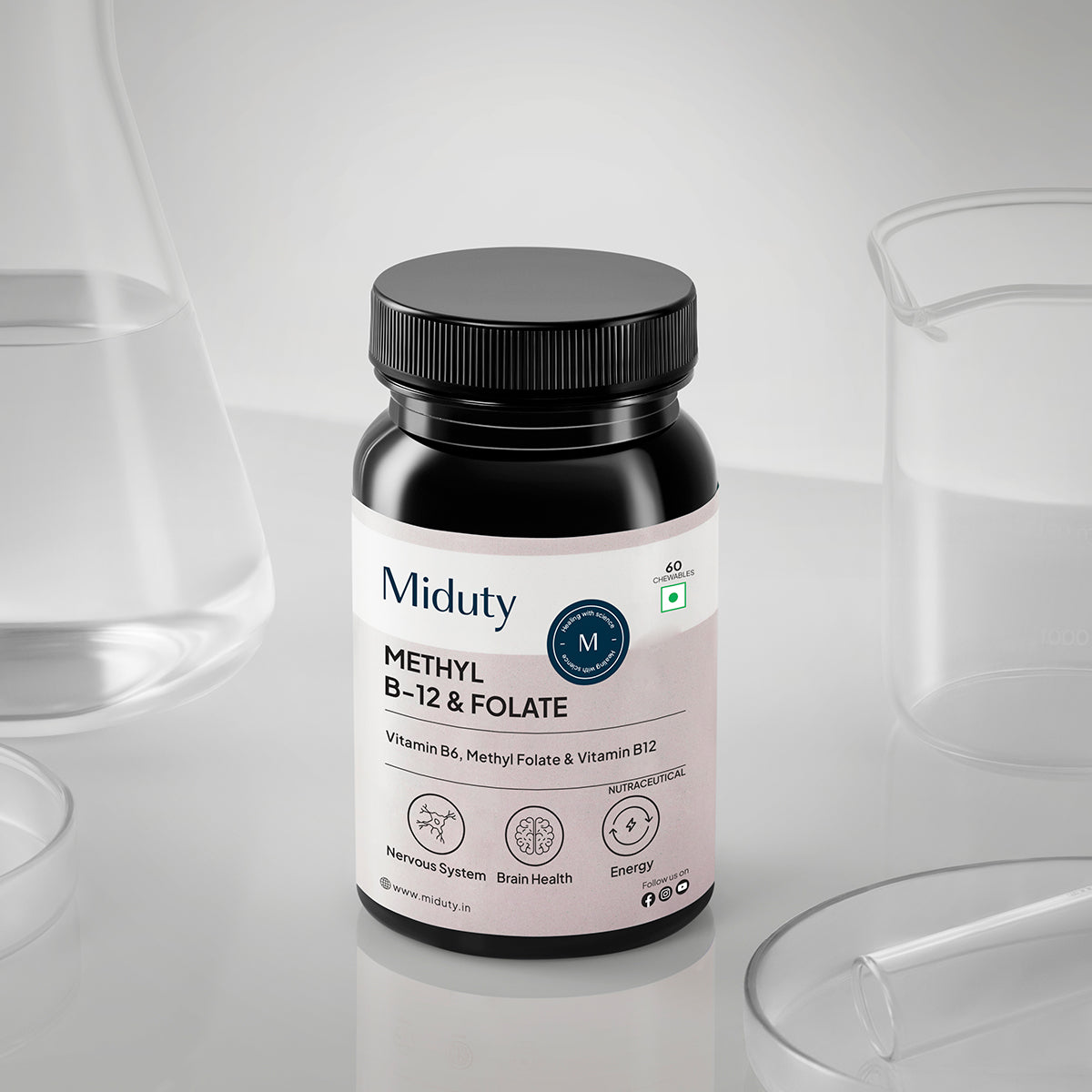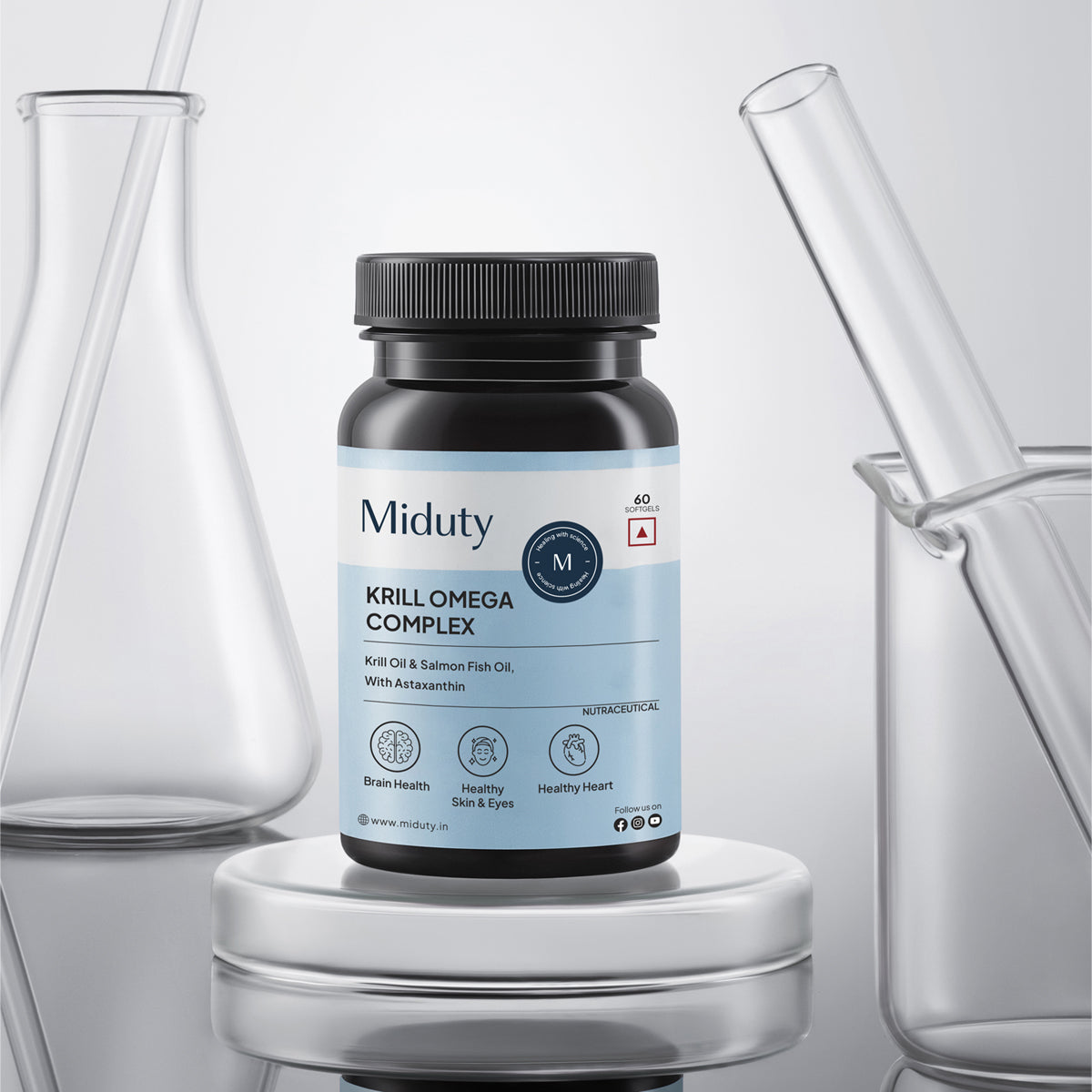
Minoxidil For Hair Growth: Uses, Benefits & Side Effects
Did you know that a study found that using 5% Minoxidil once daily for 48 weeks led to 45% more hair growth in men with pattern baldness. That means people saw a visible improvement in hair thickness and coverage over time. It's one of the few treatments proven by science to actually regrow hair.
Key Takeaways
1. Combining Minoxidil with a supplement containing Beta-Sitosterol and Saw Palmetto enhances results, as these natural DHT blockers help reduce the hormone responsible for hair follicle shrinkage, addressing the root cause of pattern hair loss.
2. Minoxidil is one of the few FDA-approved, science-backed treatments for hair regrowth, with a study showing 45% more hair growth after 48 weeks of using 5% Minoxidil once daily.
3. It works by increasing blood flow to the scalp, reviving dormant hair follicles and extending the growth (anagen) phase of the hair cycle, making hair thicker and fuller over time.
4. Minoxidil is versatile in its uses, helping not just with scalp hair loss but also showing potential in improving beard growth, eyebrows, and postpartum hair shedding (under medical supervision).
5. While generally safe, Minoxidil may cause temporary shedding, dryness, or irritation, and it's crucial to apply it properly, wash your hands afterward, and avoid touching other areas to prevent unwanted hair growth.
In a world full of trending beauty hacks and instant fixes, one product has slowly but surely earned a spot in millions of bathroom shelves Minoxidil for hair growth. What started as a little-known remedy is now a go-to favorite for anyone dealing with thinning hair or bald spots. But how did this once prescription-only product become the internet's favorite secret for hair regrowth? Let's uncover the story behind the buzz and why so many people can't stop talking about it.
What is Minoxidil?
Minoxidil is a topical solution or foam originally developed to treat high hypertension. Surprisingly, during clinical use, doctors noticed a curious side effect: patients were growing extra hair. This unexpected benefit led to the repurposing of the drug, and in the 1980s, it was approved by the FDA for topical use to promote hair growth.
Today, Minoxidil is most commonly used in concentrations of 2% and 5%, available over the counter, making it easily accessible for anyone seeking a solution for hair loss.
How Minoxidil Works?
Understanding how Minoxidil works is key to appreciating its effectiveness. Unlike many hair growth treatments that rely on nutrition or DHT-blocking properties, Minoxidil works at the vascular level.
It acts as a vasodilator, meaning it widens the blood vessels and increases blood flow to the hair follicles. This enhanced circulation delivers more oxygen and nutrients to the roots, which can help:
- Extend the anagen (growth) phase of the hair cycle
- Revive shrunken hair follicles
- Stimulate dormant follicles to start producing hair again
This mechanism makes it particularly effective for androgenetic alopecia (pattern baldness), but people also use it for other types of hair loss, such as telogen effluvium or age-related thinning.
Minoxidil for Hair Growth: What to Expect?
If you've just started using Minoxidil for hair growth, don't expect miracles overnight. Patience is key.
Here's a typical timeline:
- Weeks 1–4: You may notice a bit of shedding, this is normal. It's your body getting rid of weaker hairs to make room for stronger ones.
- Weeks 4–8: Vellus hair (light baby hairs) might begin to appear.
- Months 3–6: Hair becomes noticeably thicker and denser in areas of thinning.
- 6+ months: Maximum visible results with consistent application.
Clinical trials and anecdotal evidence show that Minoxidil works best when used consistently, twice a day, and on a clean, dry scalp. Missing doses can reduce its effectiveness, and stopping it altogether can reverse the progress.
Uses of Minoxidil for Hair Growth
While most people associate Minoxidil uses with treating scalp hair loss, it's also been embraced in off-label applications, including:
1. Beard growth: A growing number of men apply Minoxidil to their jawline and cheeks to fill in patchy facial hair.
2. Eyebrows: Some beauty enthusiasts swear by it to thicken sparse brows.
3. Postpartum hair loss: Women dealing with excessive hair fall after pregnancy also turn to it, though under medical guidance.
Minoxidil Benefits for Hair Loss
Minoxidil has earned its reputation as a go-to solution for people dealing with hair thinning and pattern baldness. Its effectiveness lies in its ability to stimulate blood circulation to the scalp, which helps deliver oxygen and nutrients to hair follicles. This process can reactivate dead hair follicles, extend the hair growth phase, and lead to visibly thicker, denser hair over time. Unlike many hair loss products that rely on unproven claims, Minoxidil is clinically backed and FDA-approved, making it a trusted choice for both men and women.
- Stimulates regrowth in thinning areas, especially the crown and vertex
- Extends the anagen (growth) phase of hair cycle
- Revives miniaturized or dormant hair follicles
- Easy to apply and fits into daily routines
- Affordable and widely available without a prescription
- Safe for long-term use with proper application
Side Effects of Minoxidil for Hair Loss
Minoxidil is generally safe, but like any treatment, it can cause some side effects, most of them mild and temporary.
- Mild scalp itching, dryness, or irritation
- Temporary increased shedding in the beginning
- Rare cases of unwanted facial hair growth
- Dizziness or rapid heartbeat if overused
- Always follow directions and avoid over-application
- Stop use and consult a doctor if severe reactions occur
Why Combine Minoxidil With a Hair Growth Supplement?
While Minoxidil stimulates hair growth externally, combining it with internal DHT blockers like Saw Palmetto and Beta-Sitosterol can deliver even better results. DHT is a hormone that shrinks hair follicles, leading to thinning especially in pattern baldness. Saw Palmetto helps block the enzyme that converts testosterone to DHT, while Beta-Sitosterol supports hormonal balance to reduce hair loss.
A study reported that 60% of participants receiving the active supplement showed improved hair growth compared to the placebo group.
Together, they address the root cause of hair thinning. For best results, consider a hair growth supplement that combines both Saw Palmetto and Beta-Sitosterol, creating a powerful inside-out approach when used alongside Minoxidil for long-term hair regrowth and retention.
Conclusion
Minoxidil for hair growth may have started as a medical side note, but today, it's a global phenomenon especially among those looking for real, affordable, and scientifically-backed solutions to hair loss. With consistent use and the right expectations, many have found it to be a lifesaver for their hair and their confidence.
While it might not work for everyone, the growing number of success stories and community support online has made Minoxidil more than just a product, it's a movement. And now that the secret's out, it might just be time to see what all the hype is about.
Frequently Asked Questions on Minoxidil for Hair Growth
Q1 - Can minoxidil regrow hair?
Yes, minoxidil can regrow hair, particularly in areas affected by pattern baldness. It works by improving blood flow to the hair follicles, stimulating new growth and strengthening existing hair.
Q2 - Is it good to use minoxidil for hair growth?
Yes, minoxidil is one of the few FDA-approved treatments for hair growth. It's clinically proven to improve hair density and thickness when used consistently.
Q3 - Is minoxidil approved for hair growth?
Yes, minoxidil is FDA-approved for treating androgenetic alopecia (pattern baldness) in both men and women. It's available over the counter in 2% and 5% formulations.
Q4 - Is minoxidil 100% effective?
Yes, minoxidil is effective for most people, but no treatment is 100% effective for everyone. Minoxidil works best for mild to moderate hair thinning. Results vary depending on factors like age, genetics, and how early treatment begins.
Q5 - At what age minoxidil is useful?
Minoxidil is generally recommended for adults aged 18 and older. It's most effective when started at the first signs of hair thinning, as it works best on active hair follicles.
References
| Sr. No. | Reference Links |
| 1. | A randomized clinical trial of 5% topical minoxidil versus 2% topical minoxidil and placebo in the treatment of androgenetic alopecia in men |
| 2. | Minoxidil |
| 3. |












